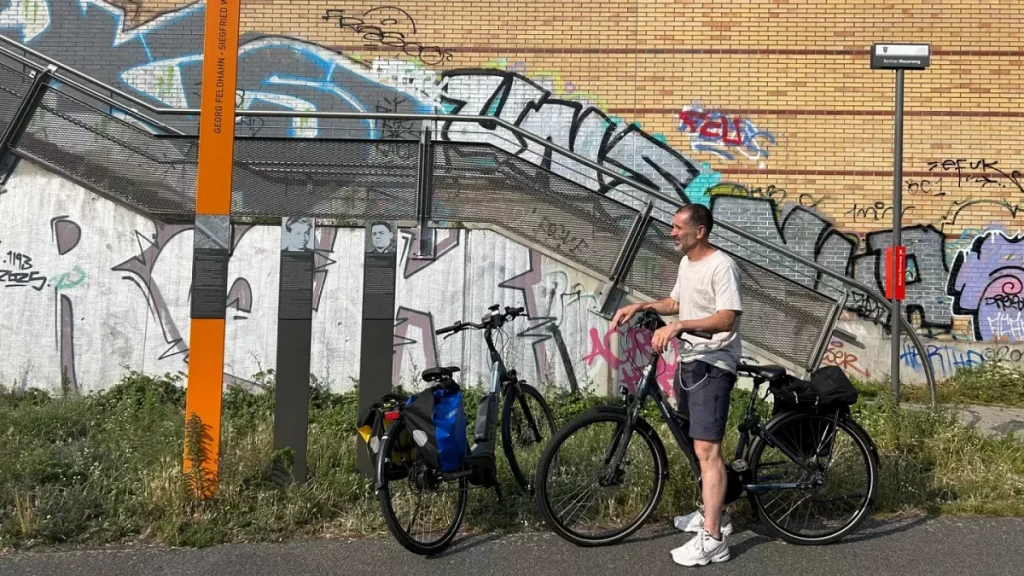Cycling the Berlin Wall: A Journey Through History, Art, and Renewal
On the momentous night of November 9, 1989, the Berlin Wall—a fortified border that had divided East and West Berlin since 1961—finally opened, beginning its eventual dismantling. Rather than erasing this scar from history, local politician Michael Cramer envisioned transforming the wall’s 160-kilometer outline into something meaningful: a memorial trail that would serve as both recreation space and historical education. This bicycle-friendly circuit, completed in 2007, now offers riders like myself a profound journey through Germany’s complex past and hopeful present. The path doesn’t just tell the story of division but reveals how art, nature, and new communities have flourished in spaces once marked by separation and fear. My five-day adventure cycling the complete Berlin Wall trail revealed not just Cold War history, but a city that has transformed its painful past into something beautiful and instructive.
Before beginning my clockwise journey on the Berliner Mauerweg, I spent a day at the DDR Museum to better understand East German history. I stayed in the Prenzlauer Berg district at the boutique Oderberger hotel, enjoying a hearty German dinner at Prater Biergarten to prepare for the days ahead. For my first day’s ride, I wisely hired a guide named Sascha from Berlin on Bike, who led me through the inner city’s historical landmarks. Beyond the tourist favorites like Checkpoint Charlie and East Side Gallery, we visited Bornholmer Strasse, where the first East Germans crossed in 1989. Hearing about that historic night from someone who was there brought an immediacy to history that no book could provide. The Berlin Wall Memorial was particularly moving with its preserved section of border fortifications—peering through the wall beneath the watchtower made clear why so few attempted crossing. After pausing at Engelbecken lake—once a canal drained to build the wall, now a serene urban oasis—I continued solo toward my overnight stay in Köpenick.
Day two revealed how the wall trail changes character outside central Berlin. With few physical remnants of the wall remaining, I rode through a surprising mix of landscapes—wooded areas, quiet residential streets, and open countryside—encountering more grazing water buffalo than fellow cyclists. This segment offered glimpses of suburban Berlin rarely seen by tourists, creating a pleasantly varied journey. The route was punctuated by commemorative steles marking the exact height of the former wall, many telling sobering stories of failed escape attempts. One such memorial honors Eduard Wroblewski, whose escape was thwarted by a hail of 274 bullets—a stark reminder of the deadly seriousness of this former border. After contemplating these tragic histories, I completed the day’s journey to Potsdam, where I stayed for two nights at the stylish Design Apartments, allowing time to explore this historically significant city.
Potsdam offered a welcome contrast to the wall’s heavy history. Long before Cold War divisions, this city served as the playground of Prussian royalty, evident in its magnificent architecture and gardens. With two nights there, I could explore beyond the famous Sanssouci Palace to discover the Barberini Art Museum’s impressive Monet collection and the city’s fascinating international architectural inspirations. Potsdam feels like a map of the world with its Babelsberg Castle recalling England’s Windsor, a Dutch Quarter reminiscent of Amsterdam, the Scottish-inspired Nauen Gate, and Sanssouci itself mirroring France’s Versailles. I ended my Potsdam exploration at microbrewery Brauerei Meierei—poetically situated on the former border—and dined lakeside at Höfts restaurant, watching locals swim in Heiliger Lake beneath the Marble Palace. This peaceful scene stood in profound contrast to the fortified border that once ran nearby.
Day four began at Glienicke Bridge, famous for Cold War spy exchanges between Americans and Soviets. Following a local tip, I detoured from the official trail through Grunewald forest to Teufelsberg—a former American listening station now transformed into one of Berlin’s most unusual landmarks housing some 400 international street art works. After this rewarding diversion, I rejoined the wall trail at Staaken, cycling waterside along the Havel River before reaching Hennigsdorf for the night. My final day started in streets with optimistically named “Freedom” and “Unity,” bringing me full circle toward inner-city Berlin. My last stop came at one of the trail’s five surviving watchtowers in Bergfelde. Once staffed by armed guards, this tower has been transformed into the Naturschutzturm education center where children now learn about environmental protection—a powerful symbol of how spaces once dedicated to division have been reimagined for connection and renewal.
The Berlin Wall trail reveals something profound about human resilience and hope. In just 35 years, what was once one of the world’s most heavily fortified borders has been transformed into a path of remembrance, education, and recreation. Cycling its length, I encountered not just memorials to a divided past, but evidence of healing—watchtowers repurposed for education, border zones reclaimed by nature, and communities rebuilding across former dividing lines. The trail serves as both warning and inspiration: a reminder of division’s human cost and evidence that even the most entrenched barriers can eventually fall. Most importantly, it demonstrates how a society can confront its painful past without erasing it, instead incorporating those difficult memories into something that serves the future. As I completed my 160-kilometer journey, what struck me most was this transformation—how spaces once occupied by one of history’s most notorious borders now nurture new connections, new understandings, and new life.


